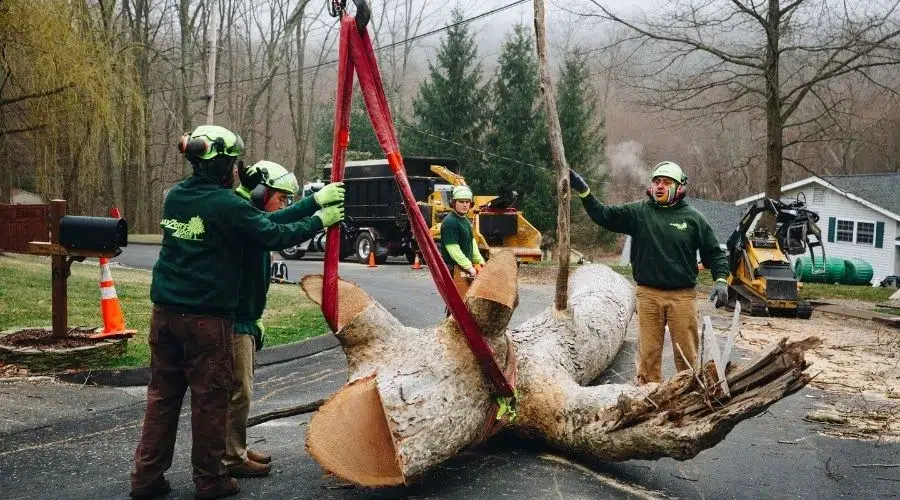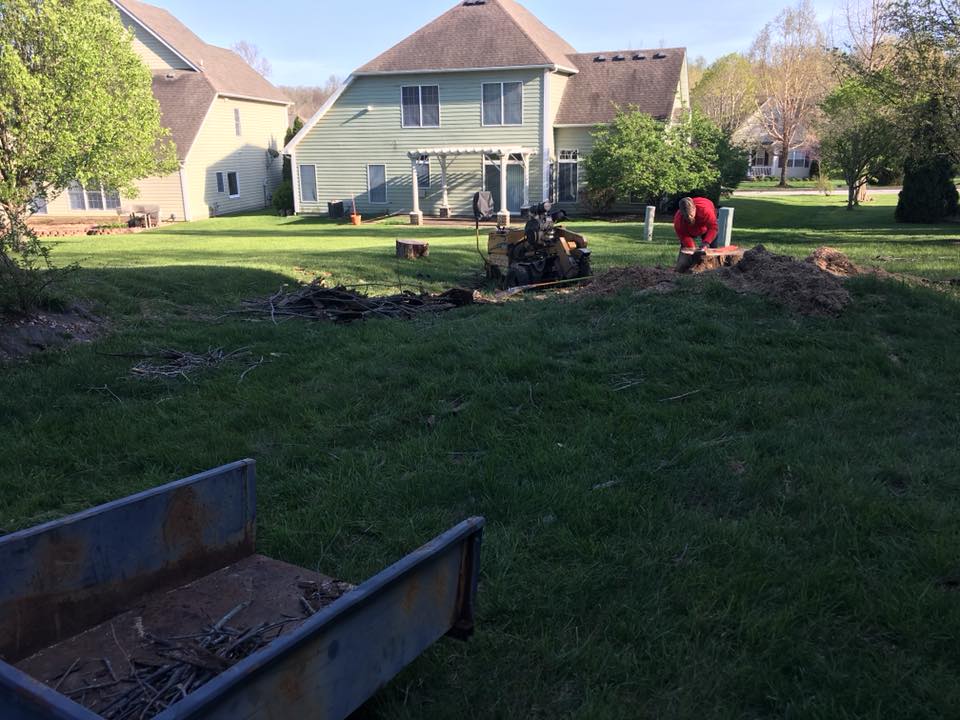Roots After Stump Grinding
Stump grinding and root removal are essential procedures in landscaping after tree removal. Stump grinding involves the use of specialized equipment to shred tree stumps into wood chips, effectively eliminating the visible remnants. However, this process often leaves the tree’s underground root system intact. Understanding the interconnection between stump grinding and root removal is crucial for comprehending the overall tree removal process.
The goal of root removal, whether done concurrently with stump grinding or separately, is to handle the residual root system. While the primary goal is to remove the stump, the destiny of the roots following stump removal raises concerns regarding their future degradation and influence on soil health. When performed correctly, these processes not only clean the landscape but also aid in soil renewal and prepare the space for new plantings or landscaping projects.
Understanding the fate of tree roots post-stump grinding
Understanding the fate of tree roots following stump grinding is critical for grasping the removal process’s aftermath. Although stump grinding primarily targets the visible stump above ground, the destiny of the tree’s subsurface root system is still a concern. While the grinding technique successfully eliminates the stump, it does not completely destroy the root structure.
Following stump grinding, the residual roots begin to rot naturally. These roots progressively deteriorate, dissolving into organic substance that enriches the soil. The rate of root deterioration following stump grinding, on the other hand, might vary based on a variety of factors such as root size, tree type, soil conditions, and environmental factors. The decomposition process is important in soil rejuvenation because it helps to restore soil health and promotes soil fertility.
What Occurs to Roots During Stump Grinding?
The main goal of the stump grinding operation is to remove the visible stump above ground. However, the fate of the tree’s subsurface root system is also influenced. The grinding equipment might mistakenly harm surrounding roots attached to the stump as it chips away at the stump.
The grinding procedure can disturb and destroy these subterranean roots, especially those near the stump. While the primary objective is to remove the stump as quickly as possible, some of the adjacent roots may be damaged or cut during this operation. The influence on the roots is mostly determined by their closeness to the stump and the depth of the grinding done.
While stump grinding primarily targets the stump, it may have an impact on adjacent roots, perhaps limiting their capacity to continue supporting the tree or changing their final decay process post-stump removal.
Root fate after stump grinding
What happens to roots after stump grinding
The destiny of tree roots follows a natural disintegration process after stump grinding. Remaining roots, robbed of the tree’s life, begin to die gradually. These roots decompose over time, becoming organic debris that feeds the soil around them. This degradation process is a natural process that helps to soil regeneration.
However, the time required for root breakdown following stump grinding might vary greatly. The pace of decay is influenced by factors such as root size, tree type, soil conditions, and environmental impacts. Larger roots may take longer to decay, and environmental factors like as moisture, temperature, and soil composition can speed up or slow down the decomposition process.
The roots degrade and add organic stuff to the soil, increasing its fertility. Regardless of natural decomposition, certain remains may remain in the soil for a lengthy period of time. Understanding the decomposition process might help you manage your expectations regarding the time necessary for full soil recovery and the area’s appropriateness for replanting or landscaping operations.
Methods for Handling Tree Roots After Stump Grinding
Root Removal: Some people choose to remove all of the roots following stump grinding, either manually or mechanically. This method entails manually pulling the residual roots from the ground, reducing the possibility of any remaining barriers and hastening the soil’s recuperation.
Spontaneous Decomposition: Another way is to let spontaneous deterioration. While some roots may remain underground after stump grinding, they disintegrate gradually over time. Soil supplements, such as compost or organic waste, speed up the decomposition process, promoting soil enrichment.
Soil Rejuvenation: Rejuvenating the soil after stump grinding encourages new growth. Organic materials, tilling, and aeration improve soil quality by stimulating microbial activity and the breakdown of residual root matter.
Replanting and Landscaping: Replanting vegetation or landscaping the area aids in the use of nutrients from decaying roots, hence improving soil recovery. It also decreases the visual impact of residual root fragments, giving the environment a new aspect.
Related Posts:
- Best Tree Trimming Pruning service Houston
- Arborist Tree service Heights TX
- When Does the Grass Stop Growing
Factors Influencing Root Degradation After Stump Grinding
Larger roots degrade more slowly than smaller ones. The structural density and composition of roots influence the rate of deterioration.
The time of root breakdown is influenced by the root structure and content of different tree species. Some species have stronger or denser root systems, which affects decomposition rates.
The makeup of the soil, moisture levels, and pH balance all play important roles in root deterioration. Moisture-rich conditions with appropriate pH values speed up decomposition.
Decomposition rates are substantially influenced by climate and temperature. Warmer temperatures often hasten deterioration, whereas cooler ones may slow it down.
A healthy microbial community in soil assists in the breakdown of organic debris, especially tree roots, speeding up decomposition. The depth at which stump grinding occurs impacts the remaining root structure. Deeper grinding reaches more roots, potentially accelerating their decomposition.
Conclusion
Understanding what happens to tree roots after stump grinding is critical for understanding the landscaping aftermath. Root deterioration after grinding is a natural process driven by a variety of circumstances. While some roots decay quickly, others may survive, affecting the soil and possible future development. Effective root decomposition dynamics management and knowledge help to successful soil restoration.



